
How to Use 28BYJ-48: Examples, Pinouts, and Specs
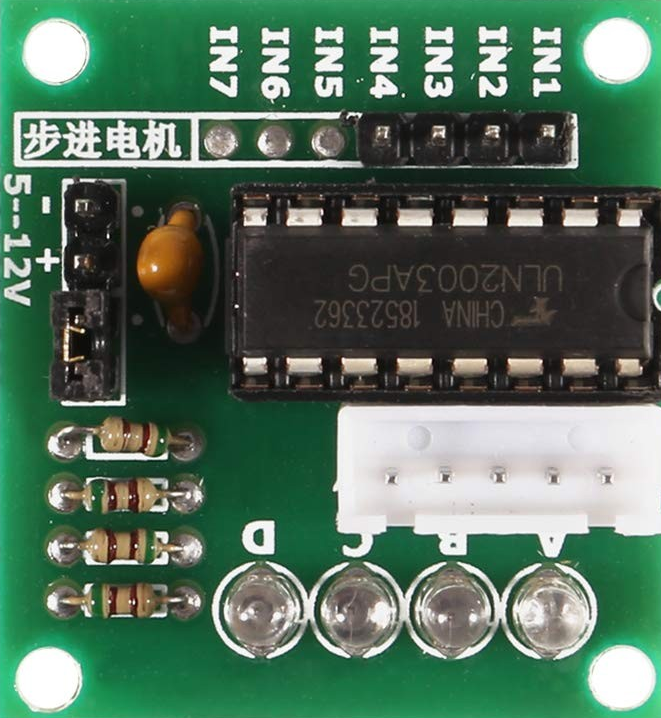
 Design with 28BYJ-48 in Cirkit Designer
Design with 28BYJ-48 in Cirkit DesignerIntroduction
The 28BYJ-48 is a unipolar stepper motor manufactured by xxxxxxx with the part ID 28BYJ-48 driver. This motor is widely used in robotics, automation, and DIY electronics projects due to its affordability, reliability, and precise control capabilities. It features a 5-phase design, enabling accurate rotation and positioning. The motor is typically paired with a ULN2003 driver board, which simplifies interfacing with microcontrollers such as Arduino.
Explore Projects Built with 28BYJ-48
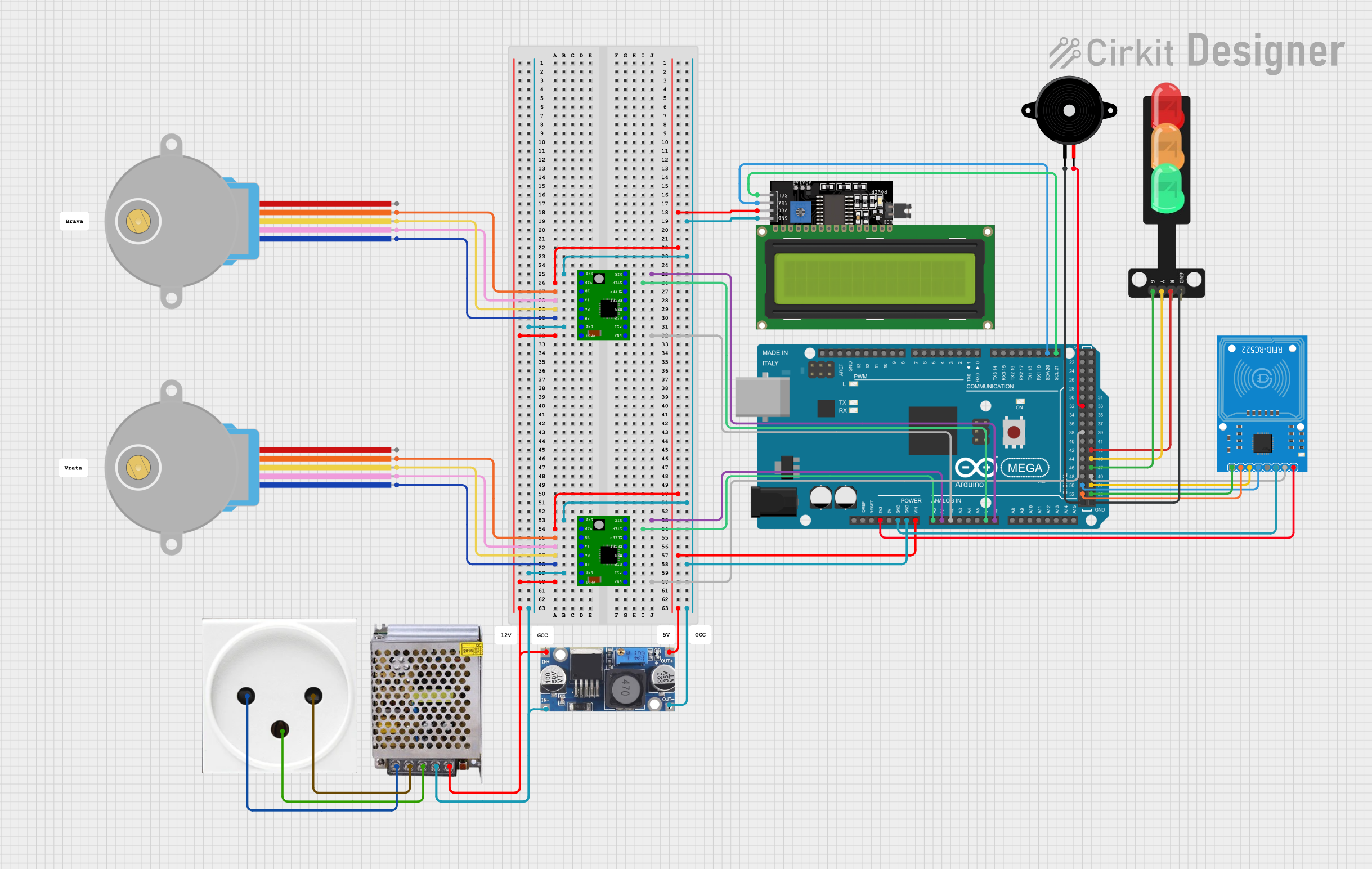
 Open Project in Cirkit Designer
Open Project in Cirkit Designer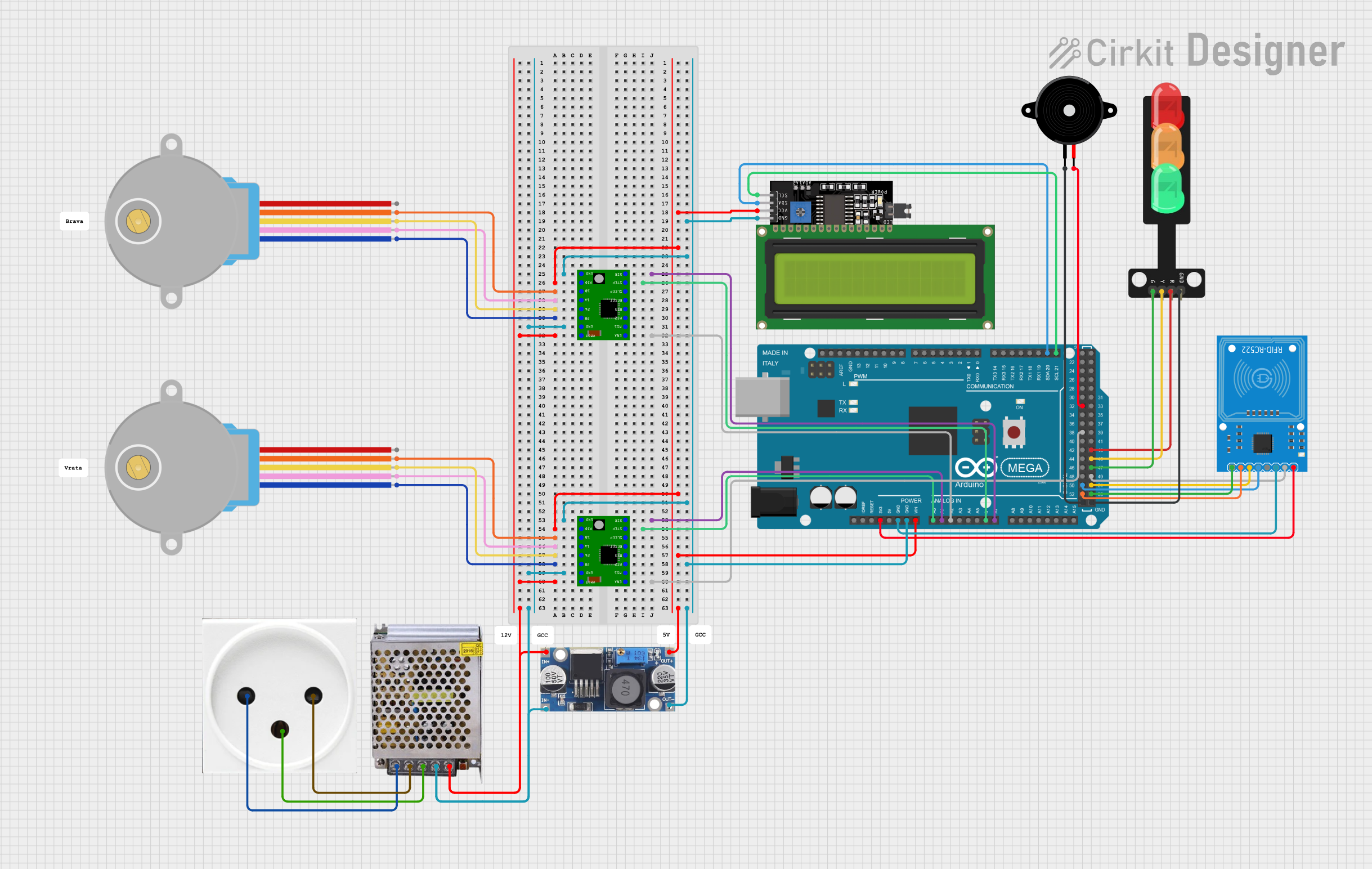
 Open Project in Cirkit Designer
Open Project in Cirkit Designer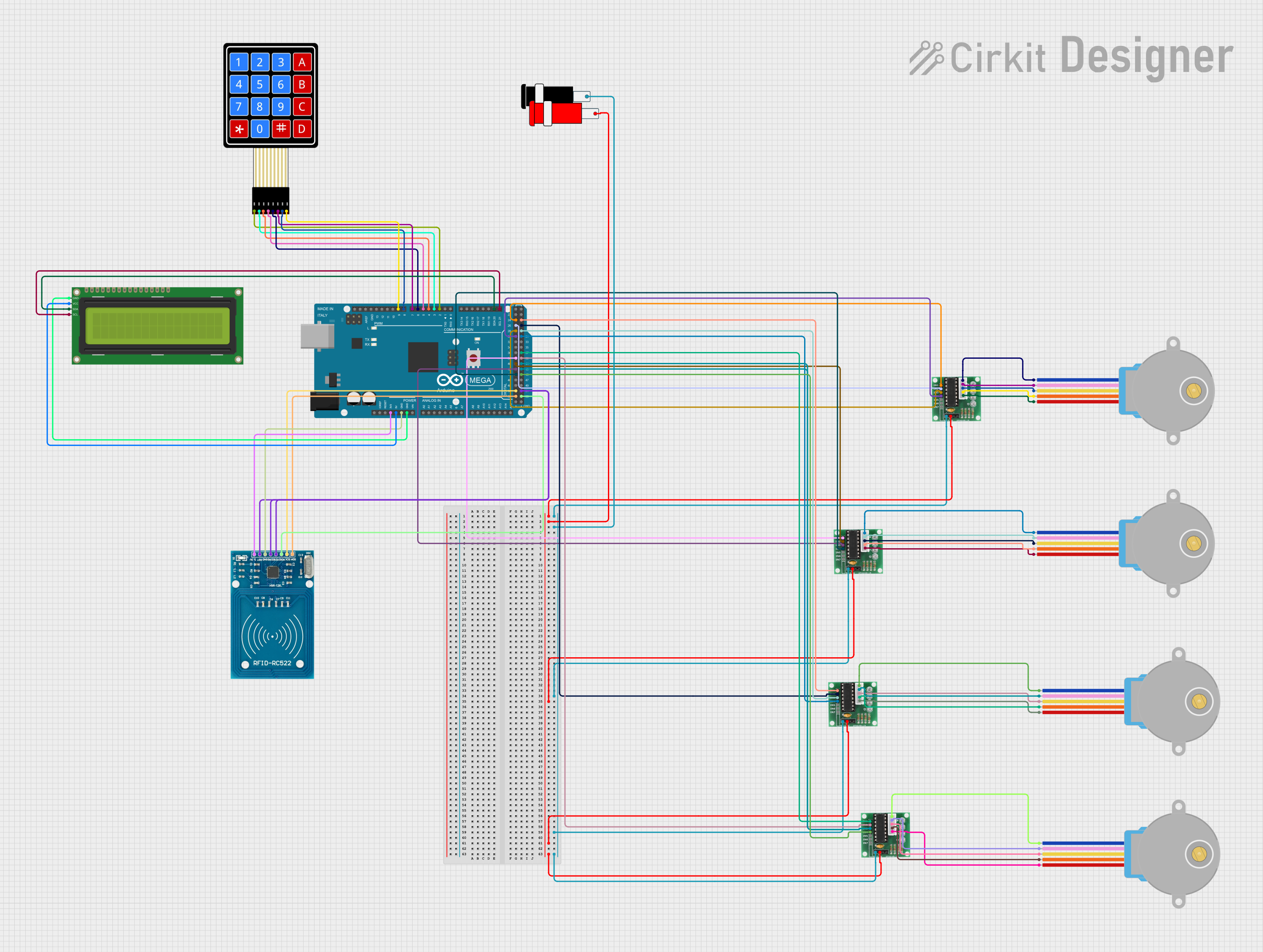
 Open Project in Cirkit Designer
Open Project in Cirkit Designer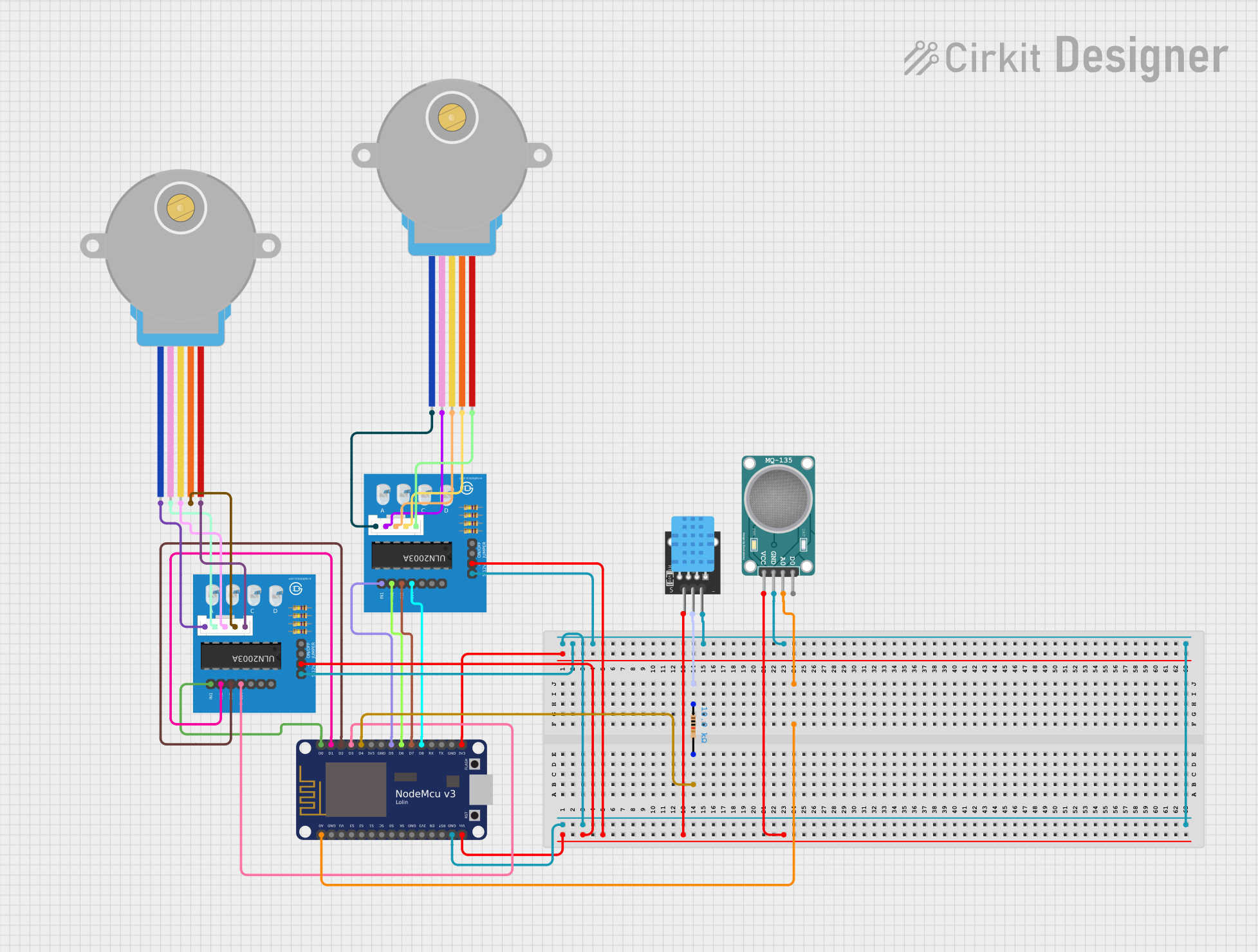
 Open Project in Cirkit Designer
Open Project in Cirkit DesignerExplore Projects Built with 28BYJ-48

 Open Project in Cirkit Designer
Open Project in Cirkit Designer
 Open Project in Cirkit Designer
Open Project in Cirkit Designer
 Open Project in Cirkit Designer
Open Project in Cirkit Designer
 Open Project in Cirkit Designer
Open Project in Cirkit DesignerCommon Applications
- Robotic arms and grippers
- Automated curtain systems
- 3D printers and CNC machines
- Camera sliders and pan-tilt mechanisms
- Educational and hobbyist projects
Technical Specifications
Below are the key technical details of the 28BYJ-48 stepper motor:
| Parameter | Value |
|---|---|
| Operating Voltage | 5V DC |
| Step Angle | 5.625° (64 steps per revolution) |
| Gear Ratio | 1:64 |
| Phases | 4 |
| Drive Type | Unipolar |
| Rated Current | 240 mA |
| Coil Resistance | ~50 Ω |
| Holding Torque | ~300 gf.cm |
| Dimensions | 28 mm diameter, 20 mm height |
| Shaft Diameter | 5 mm |
Pin Configuration (ULN2003 Driver Board)
The 28BYJ-48 is commonly used with the ULN2003 driver board. Below is the pin configuration for the driver board:
| Pin Name | Description |
|---|---|
| IN1 | Input for Coil A |
| IN2 | Input for Coil B |
| IN3 | Input for Coil C |
| IN4 | Input for Coil D |
| VCC | Power supply (5V) |
| GND | Ground |
| Motor Pins | Connects to the 28BYJ-48 motor (4 pins) |
Usage Instructions
Connecting the 28BYJ-48 to an Arduino UNO
To use the 28BYJ-48 stepper motor with an Arduino UNO, follow these steps:
- Connect the 4-pin connector of the motor to the ULN2003 driver board.
- Connect the ULN2003 board to the Arduino as follows:
- IN1 → Arduino Pin 8
- IN2 → Arduino Pin 9
- IN3 → Arduino Pin 10
- IN4 → Arduino Pin 11
- Connect the VCC and GND pins of the ULN2003 board to the 5V and GND pins of the Arduino, respectively.
- Power the Arduino and upload the control code.
Sample Arduino Code
Below is an example code to control the 28BYJ-48 stepper motor using the Arduino Stepper library:
#include <Stepper.h>
// Define the number of steps per revolution for the motor
#define STEPS_PER_REV 2048 // 64 steps * 64 gear ratio
// Initialize the Stepper library with the motor's pin connections
Stepper stepper(STEPS_PER_REV, 8, 10, 9, 11);
void setup() {
stepper.setSpeed(10); // Set motor speed to 10 RPM
Serial.begin(9600); // Initialize serial communication
Serial.println("28BYJ-48 Stepper Motor Test");
}
void loop() {
Serial.println("Rotating clockwise...");
stepper.step(STEPS_PER_REV); // Rotate one full revolution clockwise
delay(1000); // Wait for 1 second
Serial.println("Rotating counterclockwise...");
stepper.step(-STEPS_PER_REV); // Rotate one full revolution counterclockwise
delay(1000); // Wait for 1 second
}
Important Considerations
- Power Supply: Ensure the motor is powered with a stable 5V DC supply. Using a higher voltage may damage the motor.
- Speed and Torque: The motor's torque decreases as speed increases. Adjust the speed to balance performance and torque.
- Driver Board: Always use the ULN2003 driver board or a compatible driver to avoid damaging the motor or microcontroller.
Troubleshooting and FAQs
Common Issues
Motor Not Rotating
- Cause: Incorrect wiring or insufficient power supply.
- Solution: Double-check the connections between the motor, driver board, and Arduino. Ensure the power supply provides 5V.
Motor Vibrates but Does Not Rotate
- Cause: Incorrect step sequence or low current.
- Solution: Verify the control code and ensure the step sequence matches the motor's requirements. Check the power supply.
Motor Overheating
- Cause: Prolonged operation at high current.
- Solution: Reduce the operating time or use a heat sink to dissipate heat.
Inconsistent Movement
- Cause: Loose connections or insufficient power.
- Solution: Secure all connections and ensure a stable power supply.
FAQs
Q: Can I power the motor directly from the Arduino?
A: It is not recommended, as the Arduino's 5V pin may not provide enough current. Use an external 5V power supply.Q: What is the maximum speed of the 28BYJ-48?
A: The motor can achieve a maximum speed of approximately 15 RPM, depending on the load and power supply.Q: Can I use the 28BYJ-48 with other microcontrollers?
A: Yes, the motor can be used with other microcontrollers like Raspberry Pi, ESP32, or STM32, provided you use a compatible driver board.
This concludes the documentation for the 28BYJ-48 stepper motor.